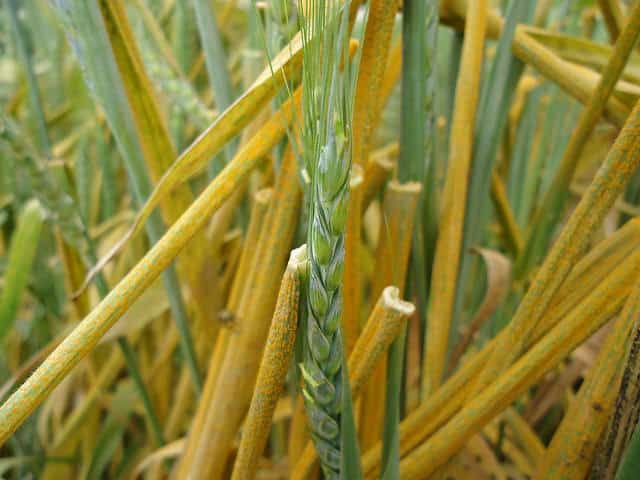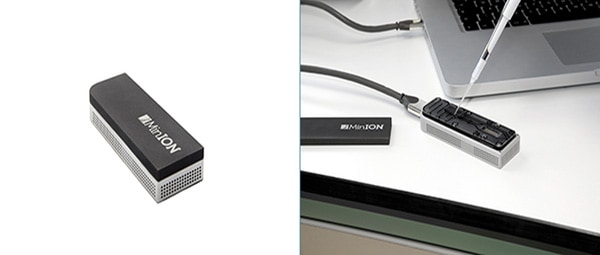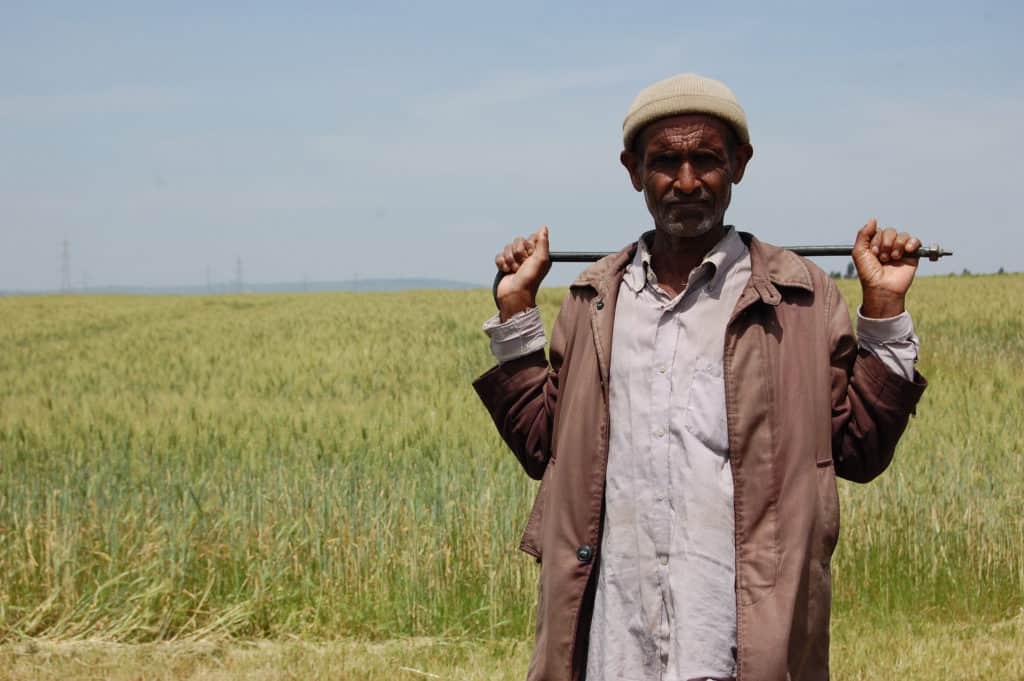Tech used to prevent spread of Zika and Ebola to tackle “forest fire” wheat rust epidemics
The same device that helped control the Zika and Ebola viruses, could soon be used to tackle devastating wheat rust epidemics that are threatening global food security

The same device that helped control the Zika and Ebola viruses, could soon be used to tackle devastating wheat rust epidemics that are threatening global food security, thanks in part to a USD$100k research grant awarded by the CGIAR Platform for Big Data in Agriculture.
The “laptop lab” technology will be used by a team of scientists to dramatically expedite wheat rust disease diagnosis and control, as one of the Platform’s Inspire Challenge winners. The team was awarded during the Platform’s recent inaugural convention.
“A rust epidemic is like a forest fire,” said Dave Hodson, the project lead and senior scientist with the International Maize and Wheat Improvement Center (CIMMYT). “You’ve got to have early detection and early control. Once the disease starts to spread, and if susceptible cultivars are grown, your options are limited and it can affect millions of hectares of wheat.”
Threat to global food security
Wheat rusts are highly mobile, transboundary fungal diseases that stunt and weaken plant growth, reducing photosynthesis and restricting nutrient transport, which results in limited grain formation. The proposal will focus first on Yellow Rust, which is currently considered the most economically damaging disease to wheat production globally.
Yellow Rust can cause potential crop loss of 60-80 percent, and recent estimates put resulting global losses at 5.47 million tonnes annually, approximating losses of $1 billion USD per annum at current world prices.

Wheat infected with rust disease
When a new race of the yellow rust pathogen appeared in Ethiopia in 2010, more than 600,000 hectares were affected. The country suffered a loss of at least 15-20% of national wheat production with losses on some small-holder farms estimated between 60-90%, affecting not only their household food security, but their livelihoods as well.
“Over $3.2 million USD was spent on fungicide in Ethiopia in 2010 and much of that was ineffective. It was sprayed too late, the damage had already been done,” said research lead Hodson.
Currently, wheat rust pathogen diagnostics can take months and sometimes up to a year to get results. Only a limited number of samples can be analysed by specialised labs using controlled greenhouse seedling tests.
The team of scientists, including Diane Saunders from the John Innes Centre (JIC), UK and Endale Gebre from the Ethiopian Institute of Agricultural Research (EIAR), propose to use a new mobile MinION sequencer (Oxford Nanopore) coupled with current field pathogenomics to give rapid diagnostics on field samples. This will be one of the first applications of this new technology to a major crop disease.
“With sequencing technologies rapidly advancing, this has opened up so many new possibilities regarding diagnostics. It is inspiring to see the success of the MinION in tracking Ebola and Zika virus strains and we hope to transfer this success to the study of plant pathogens too”. Said Diane Saunders from the John Innes Centre.
The MinION, which weighs only 100g and is not much bigger than a credit card, is connected to a laptop via a USB cable, effectively creating a “laptop lab” to enable real-time sequencing direct from field-collected samples.

MinIon device
This revolutionary new portable sequencing technology, based on unique signals for specific nucleotides as they pass through a nanopore membrane, allows sequences to be generated in hours. These field sequences can then be compared against reference sequences to permit accurate and fast diagnostics of the pathogen races.
“For the first time we hope to get diagnostics directly from the field within a just few days of sampling, then feed that into the early warning systems we’ve already got running. This has the potential to revolutionise our diagnostics and early warning” said Hodson.
Part of the funding will go towards sending an Ethiopian scientist to train with Diane Saunders at the John Innes Centre. Together they will evaluate samples collected in Ethiopia, validate the use of the new technology, and learn how to analyse the resulting data. All skills and expertise which they would then transfer for application at EIAR in Ethiopia.
“Working with EIAR and CIMMYT we aim to develop a new, rapid diagnostics platform to give farmers regular, reliable data on the strains which are present in their region to empower them to take early action to choose resistant varieties or protect their crops,” said Diane Saunders.
Role of Big Data
According to Hodson, having access to the huge data sets and analytics developed by the John Innes Centre is a crucial component: “The whole diagnostics process is data driven”.
Hodson explained that the field pathogenomics, developed by Diane at the John Innes Centre, relies on access to huge amounts of genome sequence data, plus sequences of isolates from all around the world representing all the different genetic groups of yellow rust.
“This is a huge data set,” said Hodson. “Having these components, and the bioinformatics platform to analyse and understand this data, is essential to the correct diagnosis of the specific yellow rust strain.”

Wheat farmer in Ethiopia
“Having this kind of big data available and accessible in public open repositories, which is what Diane and co-workers did, really opens the door for this type of diagnostics. This is an example for others, and demonstrates the real value of all of this work. Making these huge datasets publicly available so other people can add value.”
Global application
If successful, Dave and Diane hope to expand application of the new technology to other countries and against other pathogens.
“I was just in Siberia a few weeks ago and there we are seeing wheat stem rust on a large scale,” said Hodson.
“Colleagues in Siberia and Kazakhstan are reporting something like three million hectares of wheat were affected by stem rust in the last couple of years. Something like three million tonnes of wheat were probably lost in those outbreaks.”
With the re-emergence of stem rust as a disease of concern in several regions. Future application of the new MinION technology to help with rapid diagnostics of new stem rust races is something the researchers would like to explore.
They also plan use this against other pathogens such as wheat blast, which recently jumped from South America to Bangladesh and is now threatening the wheat basket of South Asia.
“This disease is a real concern,” said Hodson. “At the moment we have no highly resistant varieties. If you get a conducive environment it’s likely to explode, and chemical control is not really effective. So that’s another target for this technology. If it works, this could be the proof of concept allowing us to scale up and target pathogens of other major food staples. It could be a real game changer.”
**
The CGIAR Big Data in Agriculture Convention 2017: An Alliance for a Data Revolution was held at CIAT headquarters in Cali, Colombia from 19-22 of September.
The CGIAR Platform for Big Data in Agriculture is co-led by the International Center for Tropical Agriculture (CIAT) and the International Food Policy Research Institute (IFPRI).
Marianne McDade
Cali, Colombia
Popular
Related
VIDEO: Dave Hodson on receiving award




